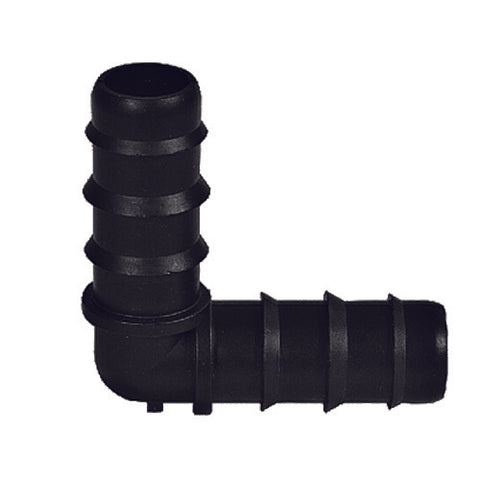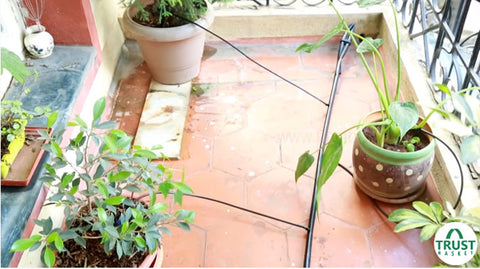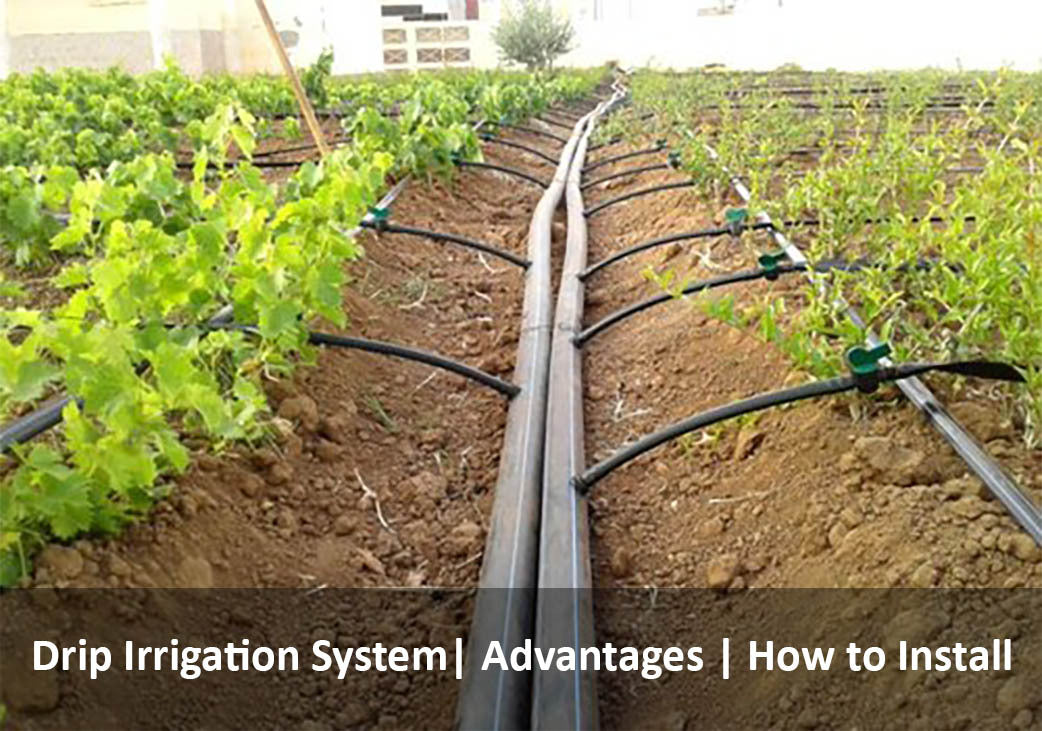How to Grow
Drip Irrigation System
Micro-irrigation is a modern method of irrigation that delivers water slowly and helps in conserving water when compared to traditional methods of watering. Micro Irrigation system helps in supplying water with low flow and pressure on surface and subsurface in many ways such as drippers, sprinklers, foggers, and bubblers. Some of the micro-irrigation methods are
- Sprinkler irrigation
- Drip irrigation
- Subsurface irrigation
- Bubbler irrigation
Among all of these, drip irrigation is the popular micro-irrigation method and is also used in gardens by few urban gardeners.
Drip irrigation:
Drip irrigation is also known as trickle irrigation or drop-by-drop irrigation method. Unlike other irrigation methods, those which saturates/drench the soil more than required level, drip irrigation supplies water only up to the required depth that is up to the root zone.
Drip irrigation in agriculture:
All thanks to the drip system, which facilitates the slow supply of water in drops to provide the right amount of water to plants. Unlike other irrigation methods, it successfully irrigates the plants that are cultivated in uneven/sloped lands.

image source
The drip system also facilitates fertilizing plants where fertilizers are diluted and supplied through the pipes/tubes. Let’s get into the details of the components of the system.
Layout/components of the drip irrigation system:
The drip irrigation system has many components to facilitate the proper delivery of water to plants. They are.
1. Pump station
2. Control head
3. Mainlines
4. Sublines
5. Laterals
6. Emitters
Pump unit/pump station: It takes water from the water source and delivers them to the pipe system with the right pressure.
Control head: It contains valves that help in controlling the discharge and pressure in the entire system. It has a filter system and may have a fertilizer tank too.
Filter system: The system contains filters to filter the unwanted materials in the water. Screen filters and graded sand filters are the most common filters that are used in drip systems and help in removing the fine materials suspended in the water.
Fertilizer/nutrient tank: This tank is also known as venturi. It contains a measured dose of fertilizer and the system adds it in water during the irrigation.

Mainlines, sub mains, and laterals: They are usually made of PVC (polyvinyl chloride) or polyethylene hose. They can be laid outside or buried below ground. It is recommended to be buried as they easily degrade/damage when exposed to direct solar radiation. The average diameters of these Laterals pipes are 12 mm - 16 mm.
Emitters: Emitters or drippers are installed on lateral lines and they control the speed of discharge of water. The spacing of the emitter can be varied according to the requirement i.e. they can be spaced far from each other in orchards while can be spaced closed to each other to irrigate plants in rows. An ideal emitter has to provide constant discharge without stoppage/blockage even when there is a slight alterations in pressure.
The drip system is even introduced into centrally sponsored schemes by recognizing its efficiency in water-conserving and energy-saving. It is widely encouraged by the central government by creating awareness and providing financial assistance to introduce and encourage the drip system in many parts of the country.
In agriculture, it is mostly used with plastic mulches for increased water use efficiency. It creates protection from sun and rain and also turns down the weed growth to a large extent.
Benefits of using drip irrigation system with plastic mulches:
- It regulates soil moisture.
- Decreases soil-borne and plant diseases.
- Reduces soil leaching and soil erosion.
- Increases the rate of growth and quality of the produce.
Advantages of drip irrigation in agriculture:
- Drip irrigation helps in water conservation as the water use efficiency of the drip system is as high as 70 - 90 % which is greater than any other irrigating method.
- It reduces the runoff, by which a huge amount of water loss occurs in other types of irrigation.
- It reduces evaporation losses.
- It also helps in fertilizing and irrigating the plants at the same time. The process of fertilization + irrigation is known as fertigation.
- Drip irrigation helps in the uniform application of the right amount of water and nutrients to plants.
- It perfectly irrigates slopped and undulated surfaces.
- Decreases the labor cost as it reduces weed growth.
- Drip irrigation also saves energy as it runs with low pressure.
Drip irrigation in gardening:
Drip system has also been dragged to urban gardening which is used by many passionate gardeners and plant lovers. Unlike drip system in agriculture, which is designed for largescale, the design of garden drip system is different. When compared, a garden drip system is simple, more convenient and easy to install and use.
Types of drip irrigation systems:
Gardening drip irrigation systems are of two types
1. Manual drip irrigation system
2. Automated drip irrigation system.
1. Manual drip irrigation system:
Layout or components of manual drip irrigation system:
It has the following components
How to install the manual drip irrigation system:
Choose a drip system according to your need so that it can serve all of your plants whether they are planted in pots or in the garden.
- Make holes on the supply line using the drip hole punch at the required places.
- Cut the feeder pipe into many parts as per requirement and connect one end of the feeder pipe to the supply line using pin connectors.
-
Insert stake and dripper at the other end of the feeder pipe and fix the emitter near to the base of plants with the help of stakes.






- In this way, fix the feeder pipes at every required point or pots to supply water to all plants.
- Direct the pipe to different locations or different areas using connectors such as elbow connectors, tee connectors, straight connectors.
Elbow connectors are used to guide irrigation pipes (main line) at corners.


Tee connectors are used to distribute the supply line in two opposite directions.


Straight connectors are used to reconnect two ends of the irrigation pipes.


Straight connectors with tap are used to regulate the flow of water so that they help in watering plants that have different water requirements.


- Block the wrongly punched/unwanted holes using dummy pins.
- Block the end of the supply line/pipe using an end cap.
- Connect the supply line to the tap using a tap adaptor. Turn on the tap in low flow mode to ensure better water usage.




How to use a manual drip irrigation system:
Once the setup of the drip irrigation system is completed, it is very easy to use the system. Attach the supply line to tap using the tap adapter and turn on the tap in low flow mode. Regulate the water flow at desired locations to meet the water requirements of different plants. You can also regulate the speed of dripping of water by loosening or tightening the emitter (can be rotated). Once the plants are watered enough, turn off the tap.
Advantages of using manually operated drip irrigation system:
- All the plants can be watered at once.
- Saves time.
- No energy consumption.
- The rate of flow of water for different plants can be regulated according to the plants’ needs.
- Prevents overwatering and leaching.
- Cost-effective as it is a one-time investment.
- Lasts for a long time.
Disadvantages of manually operated drip irrigation system:
- Little expensive when compared to regular watering methods (hose pipe/water cans).
- Plants should be placed close to each other according to the length of the supply line or can be extended further by adding another kit according to the need.

2. Automated drip irrigation system:
The layout, installation, and usage of an automated drip irrigation system is also the same as of manual drip irrigation system but the automated system comes with an electronic water timer. Which needs to be fixed between the water source and main pipeline to regulate the time and duration and of watering.
Advantages of automated drip irrigation system over the regular one:
- It also provides all the benefits of the regular drip irrigation system.
- As it is an automated system, we can set the time i.e. at what time it can water the plants.
- We can also set the timing for how long we want our plants to be watered.
- It can also set the regular intervals of time i.e. for every 24 hours, 12 hours, etc.
- The main advantage of this automated drip irrigation system is that we can water our plants even when we are on vacation as it takes care of our plants regularly.
- Cost-effective as it is also a one-time investment.
Disadvantages of automated drip irrigation system:
- Expensive than a regular drip irrigation system.
- Plants should be placed close to each other according to the length of the supply line or can be extended further by adding another kit according to the need.
Frequently asked questions:
-
How many emitters are needed for a tree?
Generally, five to six emitters/drippers are sufficient to irrigate a tree. while it also depends on tree's size, water requirement and rate of flow of water.
When it comes to gardening, one dripper can serve one or two plants in regular gardening (when grown in rows) and one plant in container gardening.
-
Is drip irrigation bad?
Drip irrigation is never bad whether it may be in agriculture or gardening. It benefits both the farmers and gardeners with its high water-conserving and low energy-consuming abilities. It reduces production and labor costs by increasing the yields/produce and decreasing weeds simultaneously.
- What are the types of drip irrigation?
Drip irrigation is of two types
1. Surface drip irrigation: Mostly used in gardening, orchards.
2. Subsurface irrigation: Used in intensive agriculture.
-
Can we use drip irrigation in gardening?
Yes, you can use drip irrigation in gardening. long with conserving water, it also conserves your time and energy. By adjusting the speed of dripping of water, you can successfully water different water requirement plants at the same time.
-
Is it expensive to install drip irrigation?
Yes, it is a little expensive to install a drip system but it completely worth your money. It consumes less energy and saves a lot of water. It nearly saves/conserves 70% of water when compared to traditional watering methods (flooding, furrow, level basin irrigations) by which you can irrigate the plants for many days with the same energy and water when compared.
- How to water plants on vacation?
Using an automated drip irrigation system is the best option to go for when you plan to go on vacations. Because other methods may end up overwatering your plants.
Popular Searches: Garden Accessories for Sale, Compost Bin India, Plastic Flower Pots Online, Contemporary Plant Pots, Hanging Pots Online, Colourful Plant Pots, Bird Feeders Online, Rectangular Planters Online, Small Pots Online, Flower Pots Online, Kitchen Waste Compost Bin, Balcony Railing Planter, Buy Pots Online, Indoor Plant Pots, Metal Flower Pot









